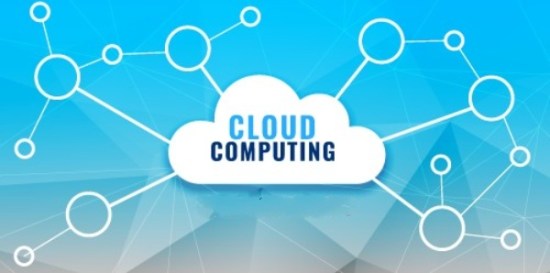
Cloud computing is gaining popularity worldwide at a rapid pace. Consequently, every major company wants to get onboard. Since Cloud Computing is becoming increasingly popular, its demand is also increasing. To make sure the layman understands what the Cloud is in this article we have tried to define in the simplest terms what cloud computing is. Cloud computing is providing any computing services such as servers, storage, databases, networking, software, analytics, and intelligence over the internet. “The Cloud” offers faster modernization, flexible resources, and economies of scale.
Cloud Computing
Cloud computing is named as such because the information being accessed is found remotely in the cloud or a virtual space. Companies that provide cloud services enable users to store files and applications on remote servers and then access all the data via the Internet. This means the user is not required to be in a specific place to gain access to it, allowing the user to work remotely.
How does it work?
Now the real question is how does cloud computing work? To make it easier to understand we need to divide cloud computing into two parts, front-end and backend.
The front end enables a user to access data stored in the cloud using an internet browser or a cloud computing software. However, the primary component of cloud computing – responsible for securely storing data and information – is the backend. It comprises servers, computers, databases, and central servers.
The central server facilitates operations by following a set of rules known as protocols. It uses a software, middleware, to ensure seamless connectivity between devices/computers linked via cloud computing. Cloud computing service providers usually maintain multiple copies of the data to mitigate instances of security threats, data loss, data breach, etc (How Does Cloud Computing Work? n.d.).
What are the cloud computing services available?
As technology is evolving at such a fast pace, the scope of cloud computing has vastly increased. It covers from the basics of storage networking, and processing power through to natural language processing and artificial intelligence as well as standard office applications (Ranger, n.d.). Basically, anything that does not require a physical location can be sent via “the cloud”.
Why is it so important?
Cloud computing has become an integral part of the IT world since it is being integrated into most of the processes. Due to the rise of cloud computing, in-house IT continues to slide.
According to Gartner, global spending on cloud services will reach $260bn this year up from $219.6bn and it doesn’t seem to be slowing down (Ranger, n.d.). This just shows how people prefer moving their load on the cloud rather than keeping physical copies.
Where is Cloud Computing used?
Since cloud computing has become such a vital part of the technological world, it’s basically everywhere. You might be using several services that use the cloud and not know it.
From online service to send email, edit documents, watch movies or TV, listen to music, play games or store pictures and other files, it is likely that cloud computing is making it all possible behind the scenes
Some of the uses are:
- Test and build applications
- Analyze Data
- Store, backup and recover data
- Stream audio and video
- Deliver software on demand.
Why should you use cloud computing?
Cloud computing eliminates the capital expense of buying hardware and software and setting up and running on-site datacenters—the racks of servers, the round-the-clock electricity for power and cooling, the IT experts for managing the infrastructure hence it automatically becomes a money saving alternative in the long run.
- Since most cloud computing services are self -service and on demand, even vast amounts of computing resources can be provisioned in minutes. Simply put you can achieve your goals at a faster rate without much hassle.
- On-site data centers use up a lot of space and are extremely inconvenient to install and maintenance. Cloud computing ensures the IT focus of more pressing matters.
- The biggest cloud computing services operate from a secure datacenter and update regularly hence reduced network latency for applications and greater economies of scale.
- Cloud computing makes data backup & file sharing easier and less costly. A company can back up their data a million times and easily recover it.
- Many cloud providers offer a broad set of policies, technologies and controls that strengthen your security posture overall, helping protect your data, apps and infrastructure from potential threats.
The Downsides of cloud computing
- Saving all your data in one place can be a major security threat. Your data could fall prey to hackers and harmful malware.
- All your data available on the cloud is accessible by the provider which gives them a lot of control.
- A major issue could be internet connectivity, unless you have access to the internet you will not have access to your data.
- In case you lose all your data, you need to make sure your service provider has a contingency plan.
The Final Word
Why go for an option that is a nightmare to install and the maintenance is extremely expensive. Instead of spending time, money and men on a cumbersome task, you can simply store all your data on the cloud. It is just a few clicks and your data is secure and backed up, you no longer have to fret over the possibility of the physical copies getting damaged.
Consequently, cloud computing is becoming a preferable alternative to physical data centers. Companies are now looking for a hassle free way for their workload and there is no better and more reliable option than cloud computing.

Cloud giants have different strengths. While AWS and Microsoft’s commercial cloud businesses are about the same size, Microsoft includes Office 365 in its figures. IBM, Oracle, Google, and Alibaba all have sizeable cloud businesses too.